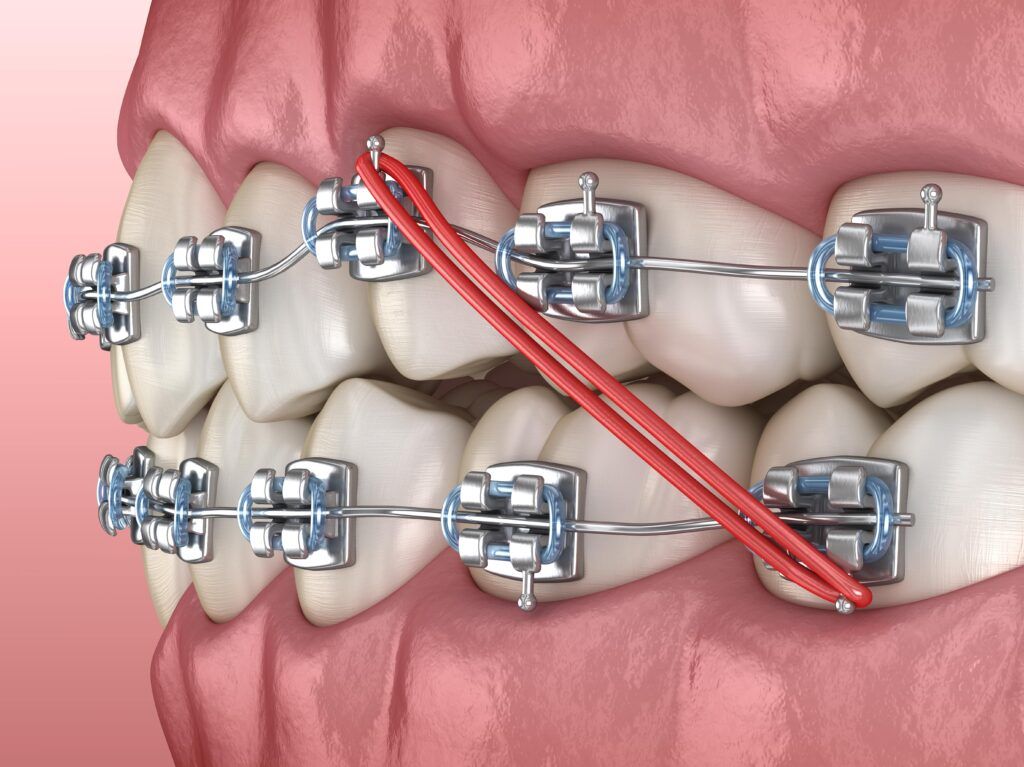What Establishes Cumming Braces and Aligners In Addition To Other Orthodontic Treatments
Wiki Article
Comprehensive Guide to Orthodontics Procedures for Dealing With Dental Misalignments
In the world of orthodontics, the trip to achieving a completely straightened smile involves a myriad of procedures customized to deal with dental misalignments. From standard dental braces to invisible aligners and even medical alternatives, the field of orthodontics provides a variety of solutions to deal with differing levels of oral irregularities. Comprehending the intricacies of each treatment, including their mechanisms, advantages, and potential disadvantages, is vital in making notified choices about one's orthodontic therapy. As we navigate with the extensive overview to orthodontic procedures for correcting oral misalignments, the complex details of each approach will unfold, clarifying the path toward a harmonious and useful oral positioning.Orthodontic Procedures Overview

In enhancement to clear aligners and typical dental braces, orthodontists might additionally suggest other interventions like headgear, palatal expanders, or retainers to deal with particular positioning issues (braces). These procedures are tailored per person's one-of-a-kind demands and may involve a mix of treatments to accomplish the preferred results. Normal changes and surveillance are critical components of orthodontic treatment to make sure progression is on track and to make any kind of necessary adjustments along the means. By undergoing orthodontic procedures, individuals can not just achieve a straighter smile however additionally improve their general oral wellness and feature.
Conventional Dental Braces: Just How They Work
When considering orthodontic treatments for oral imbalances, typical braces stand apart as a tried and true technique for remedying teeth placing. Traditional dental braces contain brackets, cords, and bands that collaborate to use continuous pressure on the teeth, gradually relocating them right into the wanted alignment. The braces are connected to the teeth making use of an unique adhesive, and the cables are threaded via the braces. By changing the tension of the wires, orthodontists can control the direction and force applied to each tooth, guiding them right into correct positioning gradually.
As stress is applied to the teeth through the braces, the bone surrounding the teeth is reshaped to support the brand-new tooth settings. Individuals will certainly require normal changes at the orthodontist's workplace to ensure the braces proceed to apply the correct pressure for effective teeth movement.
Unnoticeable Aligners: Advantages And Disadvantages
These clear, tailor-made trays are essentially undetectable when used, making them an enticing choice for people looking for a much more visually pleasing orthodontic treatment. Individuals can remove the aligners prior to consuming or brushing their teeth, lowering the risk of food obtaining stuck in the appliance and simplifying the cleansing process.
Surgical Orthodontic Options
Surgical interventions in orthodontics existing practical alternatives for addressing intricate dental imbalances that may not be properly fixed via traditional orthodontic therapies. While invisible aligners and conventional braces can fix numerous orthodontic problems, specific situations require surgical intervention to achieve ideal results. Surgical orthodontic options are generally recommended for extreme malocclusions, substantial jaw disparities, and situations where the underlying bone framework needs alteration to accomplish proper positioning.One common surgical orthodontic procedure is orthognathic surgical treatment, which includes repositioning the jaws to fix functional concerns such as problem speaking or chewing. This surgical procedure is commonly done in collaboration with an orthodontist that assists align the teeth prior to and after the procedure. Surgical orthodontics might also entail procedures to reveal affected teeth, remove excess periodontal tissue, or improve the jawbone to create an extra harmonious face profile.
Prior to thinking about surgical orthodontic choices, people go through a comprehensive analysis to identify the need and potential advantages of such interventions. cumming aligners. While surgical treatment might seem daunting, it can substantially boost both the function and aesthetics of the smile in situations where standard orthodontic treatments fail
Retainers and Post-Treatment Treatment

Post-treatment care entails following the orthodontist's directions diligently. This may consist of proper oral health techniques, attending follow-up visits, cheap cosmetic dentistry and using the retainers as suggested. Failure to abide by post-treatment treatment guidelines can result in relapse, where the teeth progressively return towards their initial placements. Regular retainer wear, good dental health, and routine oral examinations over at this website are important for keeping the results accomplished via orthodontic surgical treatment and ensuring the long-lasting security of the fixed oral alignment.
Final Thought
Finally, orthodontic procedures offer various alternatives for dealing with oral misalignments. Traditional dental braces make use of steel brackets and wires to move teeth into proper alignment. Unseen aligners supply a more discreet option however may not be ideal for all situations. Surgical orthodontic options are available for extra serious misalignments. Retainers are generally utilized post-treatment to maintain the brand-new positioning. Overall, orthodontic treatments can successfully improve oral health and wellness and aesthetic look.As we navigate via the detailed overview to orthodontic procedures for correcting oral misalignments, the intricate details of each approach will certainly unfold, shedding light on the course toward a practical site here and harmonious dental alignment. - cumming invisalign
One of the most typical orthodontic therapies is the use of dental braces, which consist of metal braces and wires that use mild pressure to progressively shift teeth into the wanted position.When taking into consideration orthodontic treatments for oral misalignments, typical braces stand out as a reliable method for remedying teeth positioning. Furthermore, invisible aligners may not be suitable for complex orthodontic concerns that need even more substantial teeth movement, as they are usually advised for moderate to modest instances. Retainers are customized orthodontic devices created to hold teeth in their fixed positions after the completion of orthodontic treatment.
Report this wiki page